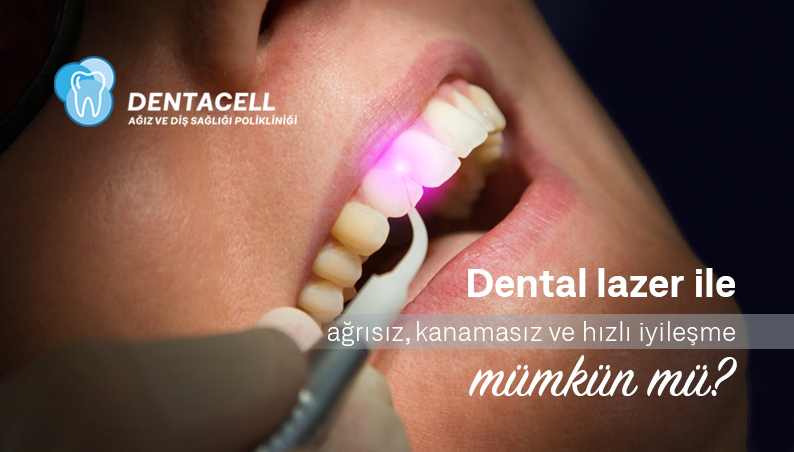Laser in Dentistry
Aims of Laser Therapy
The use of the laser in oral and dental diseases and their treatment and surgery is revolutionary for two reasons.
First, the comfort, hygiene, and sensitivity of the patient are much more successful than using conventional systems.
The second is that it provides a much wider range of treatments and shorter recovery time than the ability of conventional systems to offer.
Laser Technology Used in the Mouth
A new age laser technology in dentistry is actively involved in cutting from dental soft tissue processes. During this process, there is no physical contact with the oral tissues.
With this system, most of the cases are performed without anesthesia (without needles) and trauma to the patient.
One of the biggest features of this system is that it disinfects the studied area.
Conventional systems do not allow this.
Laser Application Advantages
In gum treatments, it often replaces surgical procedures and prevents pain and bleeding, which is the biggest fear of patients.
Pulpotomy, pulp extirpation, canal drain, and canal disinfection can be performed quickly, and can even eliminate and treat pulp gangrene in one session.
According to conventional methods, there is an obvious reduction in postoperative pain and bloating, and a noticeable shortening in recovery time.
The cutting of soft tissue lesions is perfect for excision/incision. Enables hemostatic soft tissue surgery and has an effective coagulation (blood stopping) effect.
Lingual, maxillary and mandibular phrenectomies can be performed easily, quickly, without bleeding and without anesthesia.
Herpetic (herpes) lesions and aphthous ulcers can be effectively treated quickly.
It functions to remove the sensitivity of sensitive teeth.
Treatment of Inflamed Gingival Tissue
Laser application can be applied in the gum pocket in an appropriate dose between 4 and 6 sessions.
Canal Treatment
The carious and damaged tissues of the anesthetized tooth are cleaned. Then the essence (nerve) of the tooth is reached and soft tissue residues are removed. Using the laser, the canal and surrounding tissues in the root of the tooth are purified from microorganisms. During the application, the laser provides a smooth treatment procedure without damaging the dental and surrounding tissues. Finally, the root canal is filled with specially manufactured agents.


